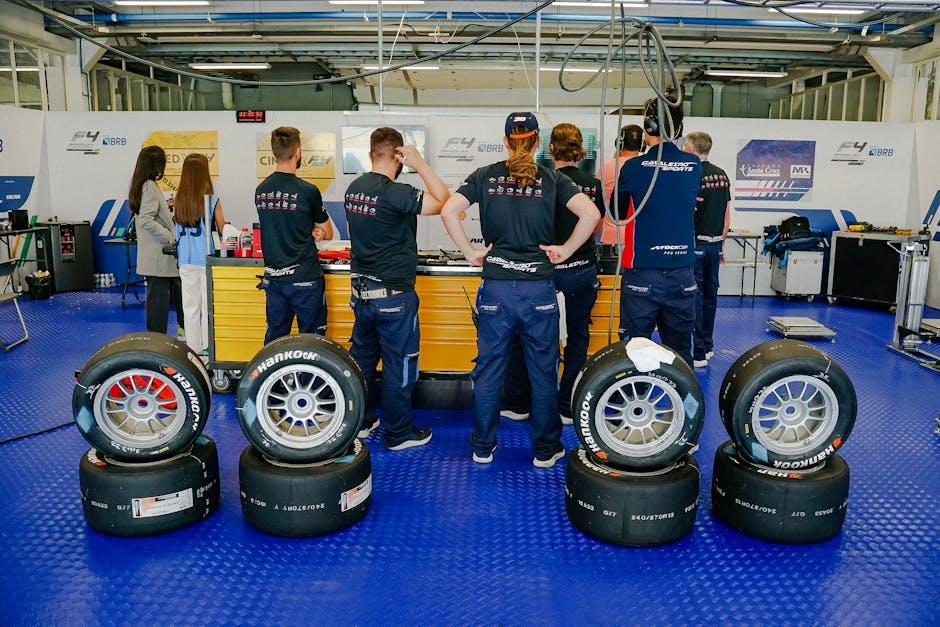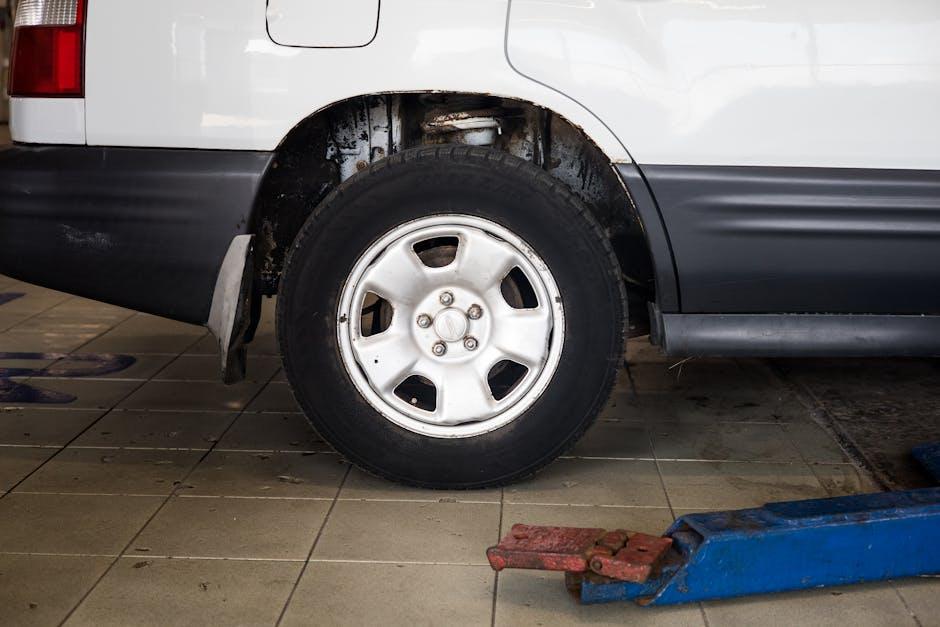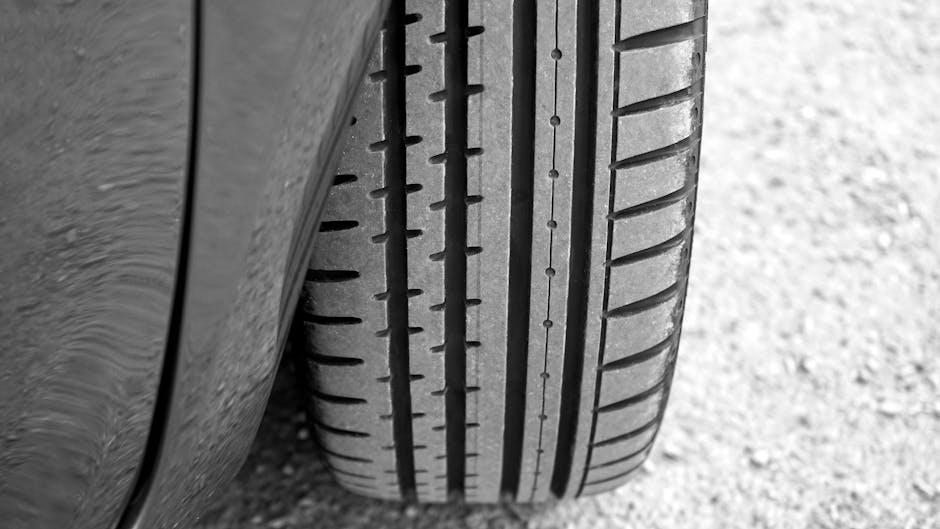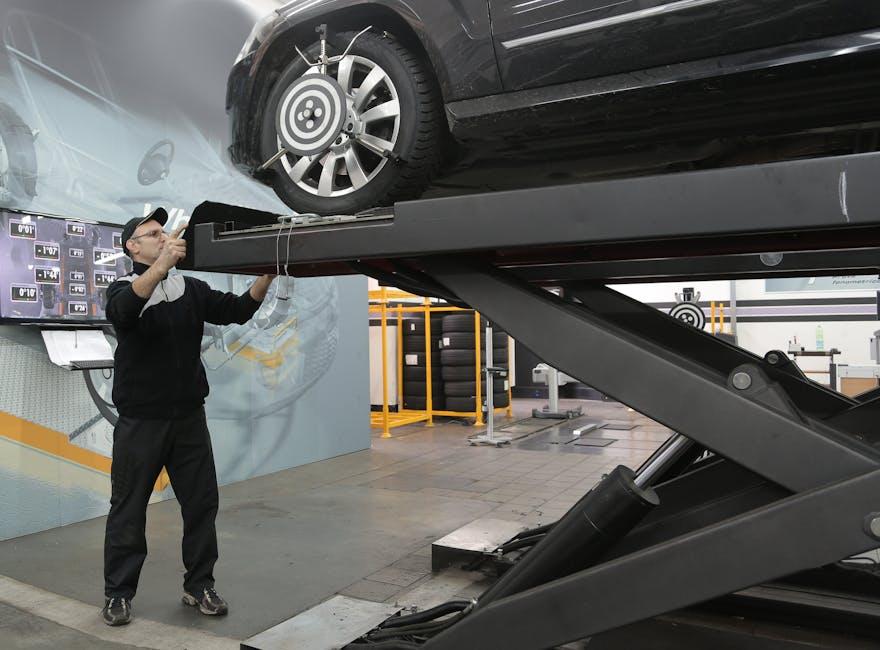When you slide into a fresh set of tires, there’s a tempting feeling of new beginnings beneath your wheels. But along with that excitement comes a question that often goes unsaid: should you get an alignment with those new tires? It’s a decision that can steer your driving experience in different directions—literally. In this article, we’ll explore the reasons behind wheel alignment, how it interacts with new tires, and whether that extra step is a necessary investment or an optional luxury for your vehicle’s performance and safety. Buckle up as we tire-dive into the alignment debate.
Table of Contents
- Understanding the Role of Wheel Alignment in Tire Performance
- How New Tires Impact Vehicle Handling and Safety
- Signs That Indicate Alignment is Needed After Installing New Tires
- The Benefits of Aligning Your Wheels When Replacing Tires
- Expert Tips on Timing Alignment Services with Tire Purchases
- Evaluating Cost versus Value When Scheduling Tire Alignment
- Q&A
- Final Thoughts

Understanding the Role of Wheel Alignment in Tire Performance
Proper wheel alignment is the unseen hero behind your tires’ optimal performance. When your wheels are aligned correctly, each tire wears evenly, which extends their lifespan and maximizes traction. Misalignment, on the other hand, causes uneven tire wear, affecting not only how long your tires last but also your vehicle’s handling and fuel efficiency. Imagine buying new tires only to neglect an alignment check — this can lead to premature tread wear and unexpected replacement costs, effectively wasting your investment.
Consider the multiple benefits of timely alignment in a simple breakdown:
- Improved Mileage: Correct alignment reduces rolling resistance, saving fuel.
- Enhanced Safety: Even tire grip means better control on wet or uneven surfaces.
- Extended Tire Life: Balanced wear means you replace tires less frequently.
- Smoother Ride: Minimizes vibrations and pulls, offering comfortable driving.
| Alignment Condition | Tire Wear Pattern | Performance Impact |
|---|---|---|
| Perfect | Even across tread | Optimal traction & fuel efficiency |
| Toe Misalignment | Feathered edges | Steering instability & uneven wear |
| Camber Off | One side worn more | Reduced tire life & handling |

How New Tires Impact Vehicle Handling and Safety
Installing new tires can dramatically change how your vehicle interacts with the road, but this fresh grip alone doesn’t guarantee optimal handling or maximum safety. With new tires, alignment issues that were previously masked by worn tread can become glaringly obvious, leading to uneven wear and unpredictable steering behavior if not addressed. Proper alignment ensures that your tires meet the road at the ideal angle, allowing for:
- Better steering response and increased precision
- Improved fuel efficiency by reducing rolling resistance
- Enhanced tire longevity, saving money over time
- More balanced vehicle stability during turns and sudden maneuvers
Neglecting alignment after fitting new tires can mean uneven pressure distribution, putting more strain on suspension components and increasing the risk of accidents in critical conditions. The table below highlights common handling issues linked to poor alignment and how new tires without proper adjustment may unintentionally exacerbate them:
| Handling Issue | Effect of New Tires Without Alignment | Benefit of Proper Alignment |
|---|---|---|
| Pulling to One Side | More noticeable due to increased tire grip | Even tire contact for straight-line driving |
| Uneven Tire Wear | Accelerated wear patterns on one edge | Uniform pressure distribution for longer tire life |
| Steering Instability | Reduced control during cornering | Smoother and predictable handling response |

Signs That Indicate Alignment is Needed After Installing New Tires
After fitting new tires, it’s crucial to watch out for certain signs that suggest your vehicle’s alignment might be off. One of the most common indicators is uneven tread wear, where some parts of the tire look more worn out than others, sparking concern over how your car’s wheels are positioned. You might also notice the steering wheel pulling to one side when driving on a straight road, or a general feeling of looseness or wandering in the steering, both clear hints that the wheels aren’t aligned correctly. Listening for unusual noises and feeling excessive vibrations can also point to alignment problems post-installation.
Here’s a quick rundown of common symptoms that won’t let you ignore a necessary alignment:
- Vehicle pulls to left or right while driving straight
- Uneven or rapid tire wear shortly after new tires are installed
- Steering wheel off-center when driving straight
- Steering wheel vibrations at higher speeds
| Symptom | What It Means | Potential Cause |
|---|---|---|
| Uneven Tire Wear | Reduced tire life | Misalignment of wheels |
| Pulling to One Side | Safety risk and discomfort | Incorrect toe or camber setting |
| Steering Wheel Vibration | Unstable driving experience | Imbalanced wheels or alignment issue |

The Benefits of Aligning Your Wheels When Replacing Tires
Getting an alignment done when installing new tires can dramatically impact your driving experience. Proper alignment ensures that your tires meet the road at the correct angle, maximizing contact with the surface and resulting in improved traction and handling. Without alignment, even brand-new tires may wear unevenly, leading to premature replacement and unnecessary extra costs. This simple procedure can extend the lifespan of your new tires and maintain optimal performance from day one.
Key advantages include:
- Enhanced fuel efficiency due to reduced rolling resistance.
- Improved safety by preventing pulling or drifting while driving.
- Prevention of uneven tread wear, saving money on tire replacement.
- Smoother, more comfortable ride quality on all road conditions.
| Benefit | Impact |
|---|---|
| Fuel Savings | Up to 10% reduction in fuel consumption |
| Tire Longevity | Up to 30% longer tread life |
| Driving Safety | Better control in wet & dry conditions |

Expert Tips on Timing Alignment Services with Tire Purchases
Timing alignment services to coincide with new tire purchases can save you both money and trouble down the road. When new tires are installed on a misaligned vehicle, the uneven pressure can cause premature and irregular tire wear, often cutting tire life in half. It’s crucial to ensure your wheels are properly aligned before mounting the new tires to promote even wear patterns and optimal handling performance. Additionally, alignment checks at this stage provide an opportunity to catch suspension or steering issues early, preventing costly repairs or safety hazards.
Consider these key points when planning your timing:
- Proactive Alignment: Schedule the alignment service just prior to putting on new tires to maximize lifespan and improve fuel efficiency.
- Alignment + Tire Packages: Many shops offer discounts on combined services, so inquire about bundled pricing.
- Regular Alignment Checks: Even if you don’t plan on new tires immediately, biannual alignment inspections can extend tire life and preserve steering precision.
| Service Timing | Benefit | Why It Matters |
|---|---|---|
| Before New Tires | Maximize tire life | Prevents irregular tire wear |
| After Tire Install | Corrects minor drifts | May miss underlying issues |
| Regular Checks | Consistent handling | Maintains fuel efficiency |

Evaluating Cost versus Value When Scheduling Tire Alignment
Balancing the immediate expense of tire alignment with the long-term benefits often has drivers questioning its necessity right after installing new tires. While the cost of an alignment may seem like an additional, avoidable expense, it is essential to consider the potential savings on tire wear and improved vehicle performance it brings. Poor alignment can cause uneven tire wear, reducing the lifespan of your new investment and possibly leading to premature replacement. By investing in alignment upfront, you safeguard your tires’ longevity, ultimately protecting your wallet from unexpected costs down the road.
When analyzing value beyond just the price tag, think about:
- Fuel efficiency: Proper alignment minimizes drag and resistance, helping your vehicle run more efficiently.
- Safety: Well-aligned tires ensure better traction and control, particularly in adverse conditions.
- Comfort: Alignment helps prevent vibration and uneven handling issues, delivering a smoother ride.
| Factor | Cost Impact | Value Gained |
|---|---|---|
| Immediate Alignment | Moderate Expense | Longer tire life, improved safety |
| Skipping Alignment | Zero upfront cost | Uneven wear, higher replacement costs |
Ultimately, the decision isn’t just about spending money but making an investment that keeps your new tires performing as expected. Aligning your vehicle at the time of their installation maximizes value by combining cost-efficiency with enhanced safety and performance.
Q&A
Q: Should I get an alignment when I buy new tires?
A: While it’s not always mandatory, getting an alignment with new tires is a smart move. Proper alignment ensures your tires wear evenly, extend their lifespan, and keep your vehicle handling smoothly.
Q: What happens if I skip alignment after installing new tires?
A: Skipping alignment can lead to uneven tire wear, which means your new tires might wear out faster than expected. It can also cause your car to pull to one side, reducing driving comfort and safety.
Q: How do I know if my car needs an alignment?
A: Some signs include the vehicle pulling left or right, uneven tire tread wear, a crooked steering wheel when driving straight, or unusual vibrations. Even if you don’t notice these signs, alignment can still be beneficial with new tires.
Q: Can an alignment save me money in the long run?
A: Definitely. By ensuring tires wear evenly and maintain optimal contact with the road, alignment can prevent premature tire replacement and improve fuel efficiency, saving you money over time.
Q: Is alignment a complicated or expensive process?
A: Alignment is a routine maintenance task for professional shops. Costs vary but are generally reasonable compared to the potential expense of replacing tires early or dealing with handling issues.
Q: Should alignment be done before or after mounting new tires?
A: It’s best done after the new tires are mounted. This way, the technician can adjust settings based on how the new tires sit and perform on your vehicle.
Q: Does every vehicle need alignment after buying new tires?
A: Not every vehicle, but most do benefit from it. Vehicles with known suspension or steering issues, or those with uneven tire wear, absolutely should get aligned. For newer or recently serviced cars, it might be less urgent, but still recommended.
Q: How often should I get my wheel alignment checked?
A: Experts suggest checking alignment at least once a year or anytime you notice handling problems, uneven wear, or after hitting a significant pothole or curb.
Q: Bottom line: to align or not after getting new tires?
A: When in doubt, align. It’s a small investment that promotes safety, better performance, and longer-lasting tires—making new tires a better value overall.
Final Thoughts
In the end, deciding whether to get an alignment with new tires boils down to a simple question: do you want to maximize the life and performance of your investment? While the upfront cost might give you pause, alignment ensures that your new tires wear evenly, improve handling, and keep you safer on the road. Think of it as a tune-up for your vehicle’s footing—a small step that can make a big difference down the drive. So, when those fresh tires go on, consider an alignment not just as an extra expense, but as a smart move toward smoother, safer journeys ahead.
